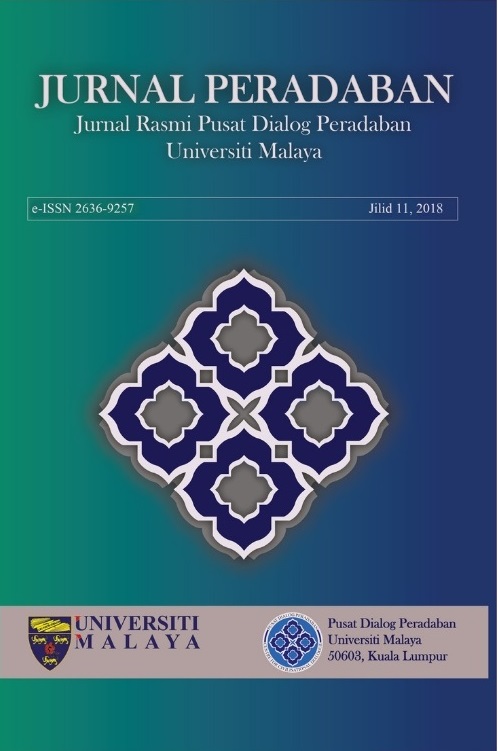Gejala Takfirisme Dalam Gerakan Ekstremisme Agama Semasa
DOI:
https://doi.org/10.22452/PERADABAN.vol11no1.3Keywords:
: ekstremisme, takfirisme, nyawa, wasatiyyah, ideologi-balasAbstract
Gejala faham pelampau agama masa kini telah memberikan impak negatif terhadap citra Islam di peringkat global mahupun tempatan. Berideologikan takfirisme, kumpulan-kumpulan pelampau telah sewenang-wenangnya menghukum kafir terhadap semua pihak yang tidak menyokong perjuangan dibawa oleh mereka termasuk umat Islam. Hal ini secara langsung dan tidak langsung telah menimbulkan kekacauan dan ancaman keselamatan yang serius terhadap keamanan dunia. Justeru itu, kajian ini menganalisis fahaman takfir yang dianut oleh kumpulan pelampau untuk mengenal pasti epistemologi dan world-view mereka. Dengan menggunakan metodologi kajian kualitatif sepenuhnya, kajian dokumentasi dilakukan secara induktif dan komparatif terhadap data-data berkaitan golongan pelampau zaman awal dan juga semasa. Hasil kajian mendapati, sememangnya wujud persamaan ideologi yang dianut oleh Khawarij dan kumpulan pelampau semasa, khususnya dalam persoalan takfir. Selain itu, mereka juga mempunyai pelbagai persamaan lain seperti sifat permusuhan dan amalan tanpa batasan hasil daripada ideologi takfir yang dianut. Oleh itu, fahaman ini perlu dibanteras daripada akar umbi agar imej Islam sebagai agama keamanan dapat dipelihara.
The elements of religious extremism nowadays have produced negative impacts on the image of Islam globally and locally. Based on the ideology of takfirism, extremist groups have easily declared kafir against all those who do not support their agenda including the Muslims. This has caused chaos and serious security threat to the world security directly and indirectly. Hence, this study analyses takfirism professed by extremist groups to identify their epistemology and world-view. By using qualitative study methodology entirely, documentation study was conducted in inductive and comparative research from early history to current extremism data. The findings suggest that there exists ideological similarity embodied by the Khawarij and the current extremist groups, especially in the question of takfir. In addition, they also have various other similarities such as the nature of hostility and tyranny practices without limitation as a result of the ideological takfir. Therefore, this ideology must be eliminated from the roots so that the image of Islam as a religion of peace can be preserved.

